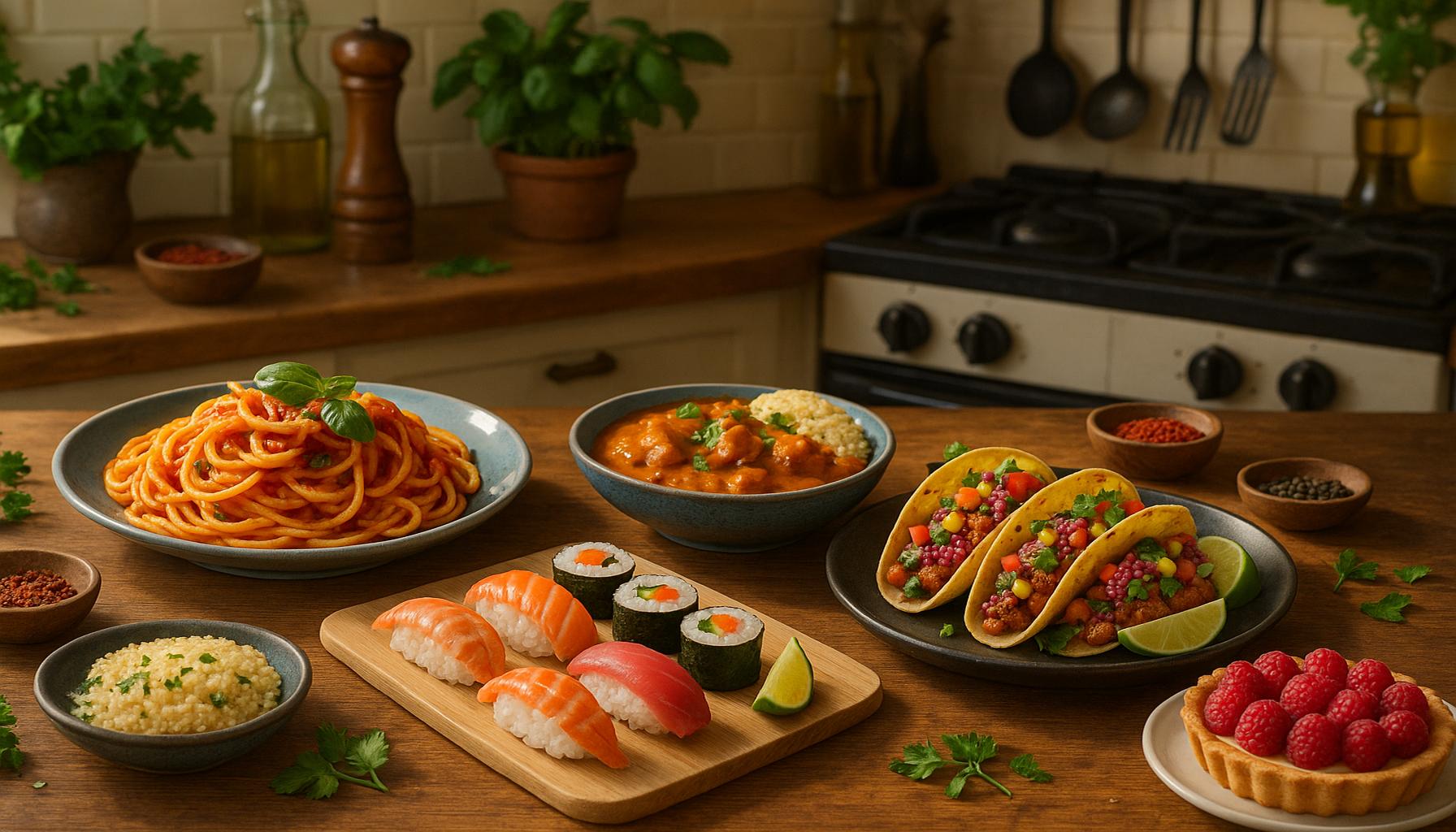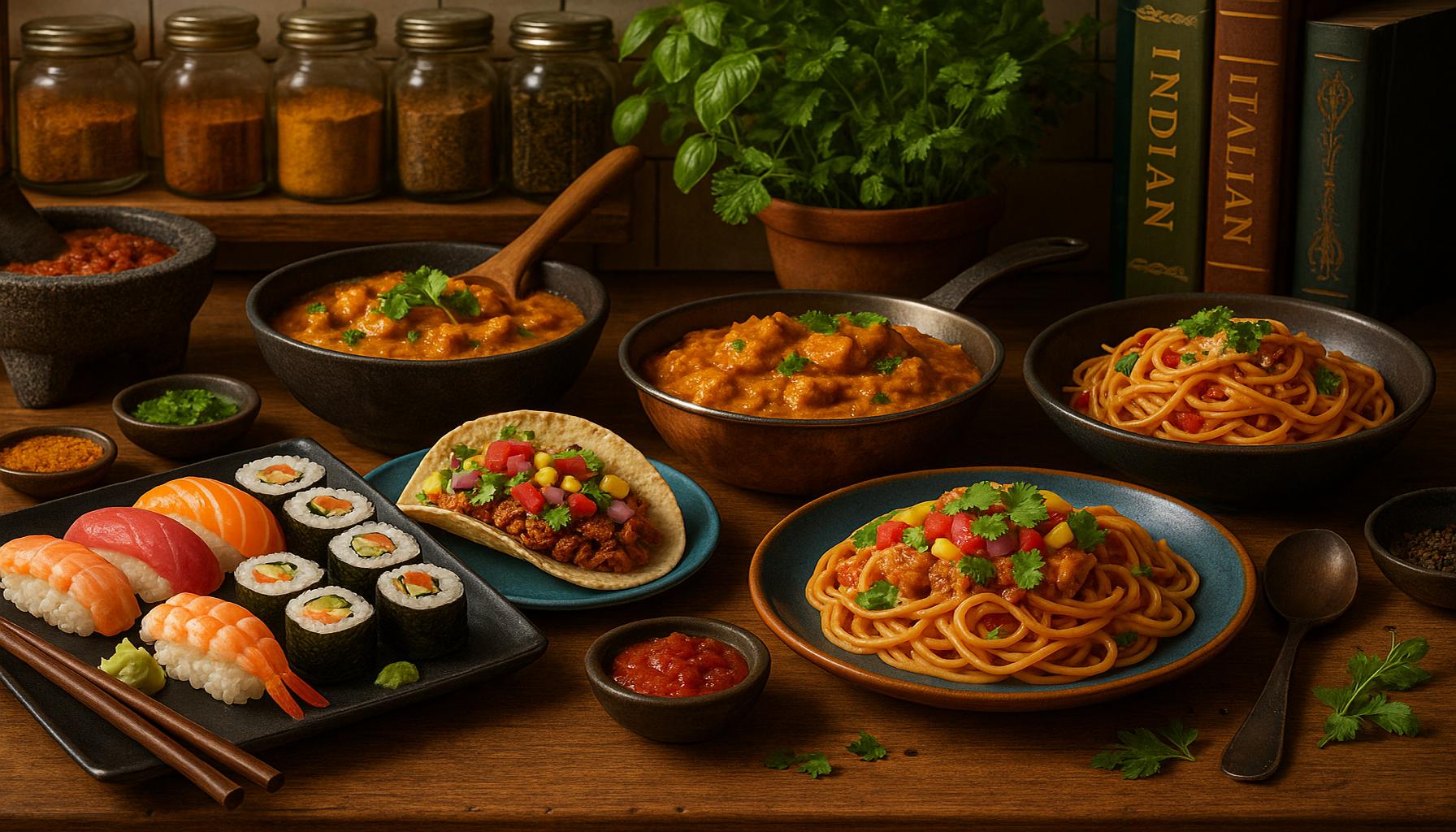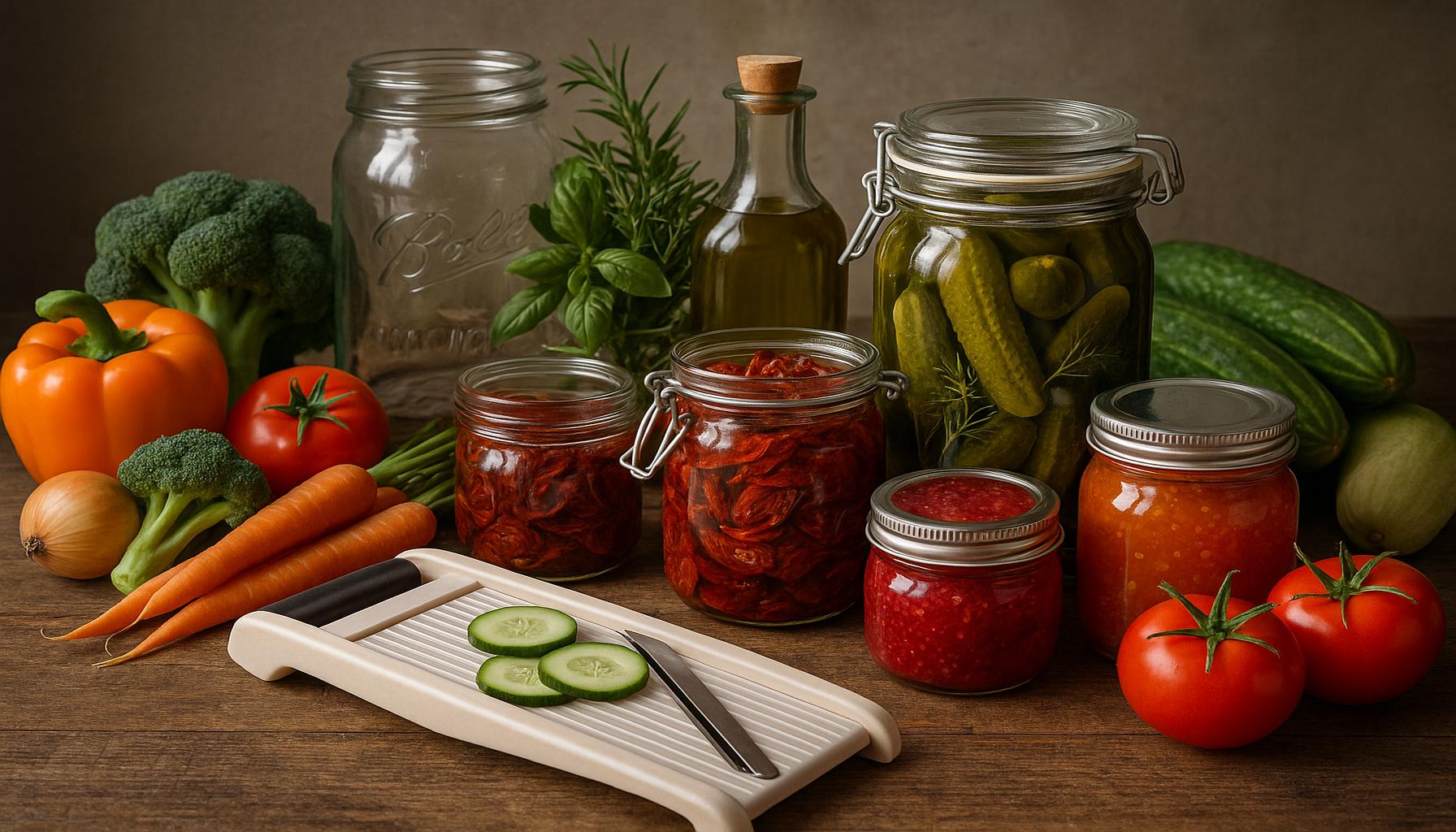International Cuisine: Learning Traditional Recipes from Different Cultures
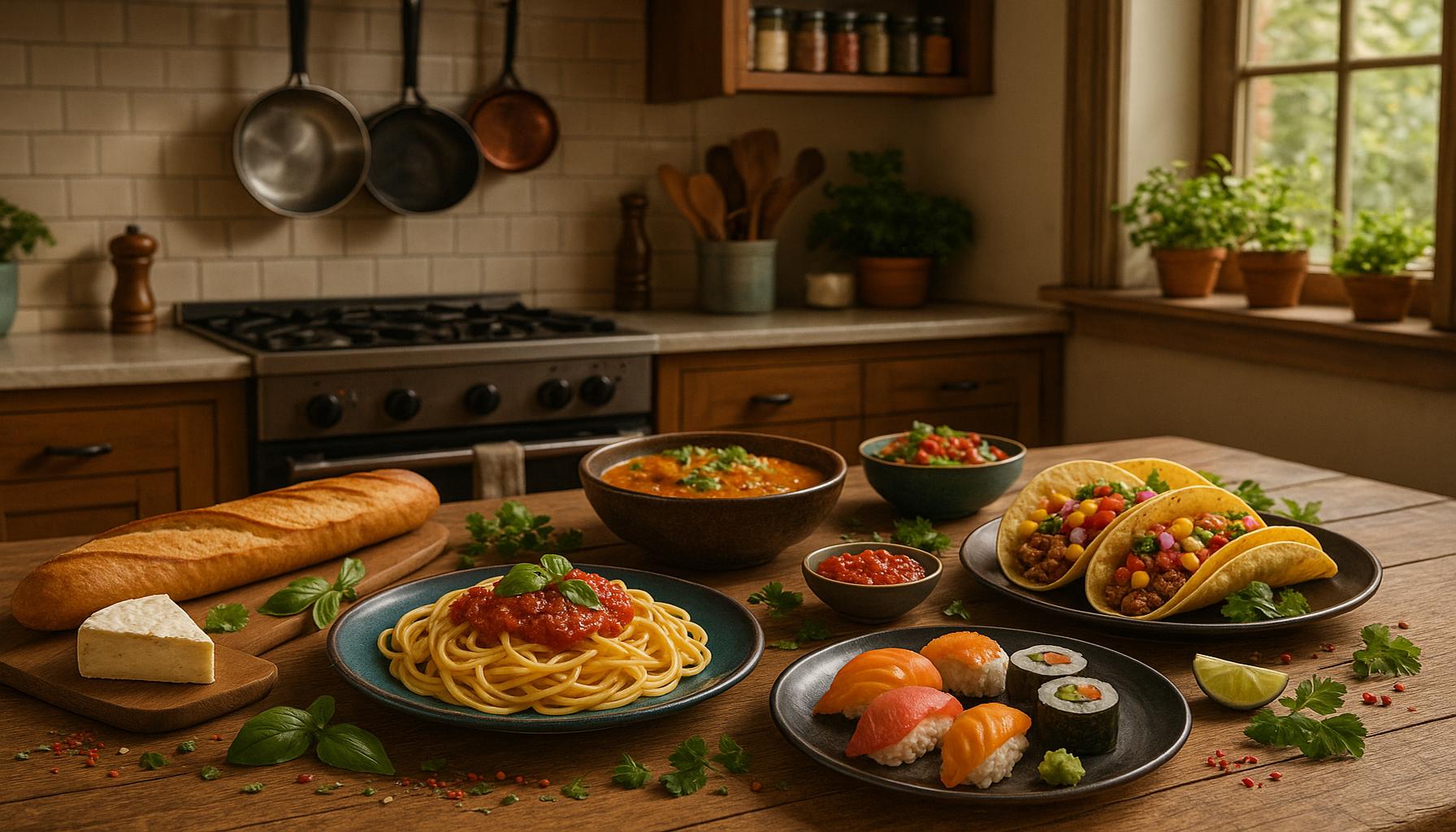
Food as a Cultural Bridge
Food is a universal language that transcends borders and tells stories of culture and tradition. International cuisine offers a vibrant tapestry of flavors, cooking techniques, and unique ingredients that reflect the heritage of various nations. Each dish is a reflection of its roots, often encapsulating centuries of history and social evolution.
Learning traditional recipes from different cultures enables us to connect deeply with diverse communities. With each culinary endeavor, we are not just preparing a meal; we are engaging in a cultural exchange that allows us to appreciate the perspectives and practices of different peoples. Here are some fascinating aspects of this culinary journey:
- Diverse Ingredients: Each culture boasts ingredients specific to its landscape and climate, contributing to distinct flavors. For instance, the use of fresh herbs like cilantro in Mexican cooking provides a brightness that complements hearty dishes. In contrast, spices such as saffron and cumin dominate Middle Eastern cuisine, adding depth and warmth to meals.
- Cooking Techniques: Techniques vary widely across the globe, from grilling and fermenting to sautéing and slow cooking. Take, for example, the art of preparing traditional Korean kimchi, which involves fermenting seasoned vegetables, a process that not only preserves food but also enhances its flavor profile through fermentation chemistry. This is quite different from the Italian method of sautéing garlic in olive oil to form the foundation of many pasta sauces.
- Historical Influence: Many recipes are shaped by historical events, regional availability, and cultural exchange. The spice trade greatly influenced the development of Indian cuisine, introducing flavors from distant lands and creating a delicious mix that is celebrated worldwide. Similarly, the migration patterns and movements of people throughout history have brought distinct dishes to new regions, evolving along the way.
Some popular examples of international dishes that you can discover include:
- Italian Pasta: A staple of Italian cuisine, pasta comes in numerous regional variations. From the creamy carbonara of Rome to the rich, meaty lasagna of Emilia-Romagna, each dish often reflects local ingredients and traditions, highlighting the diverse nature of Italian cooking.
- Mexican Tacos: Known for their vibrant colors and flavors, tacos are a cornerstone of Mexican street food. They celebrate a medley of textures and flavors, typically featuring fresh ingredients like avocados, cilantro, and various meats, often prepared in ways unique to different regions in Mexico.
- Japanese Sushi: Sushi emphasizes artistic presentation and the quality of fresh ingredients. The meticulous techniques involved in sushi preparation showcase a commitment to both aesthetics and taste, a distinction that makes it a global favorite.
As we dive into this exploration, expect to uncover not just recipes but the rich narratives that accompany each dish. Each bite tells a story of heritage, passion, and community, reflecting the rich tapestry of human experience. Embarking on this culinary journey can open your palate to new experiences and connect you to cultures worldwide, broadening not only your taste buds but also your understanding of the intricate flavors that define our global community.
DIVE DEEPER: Click here for insights on the mental health benefits of music
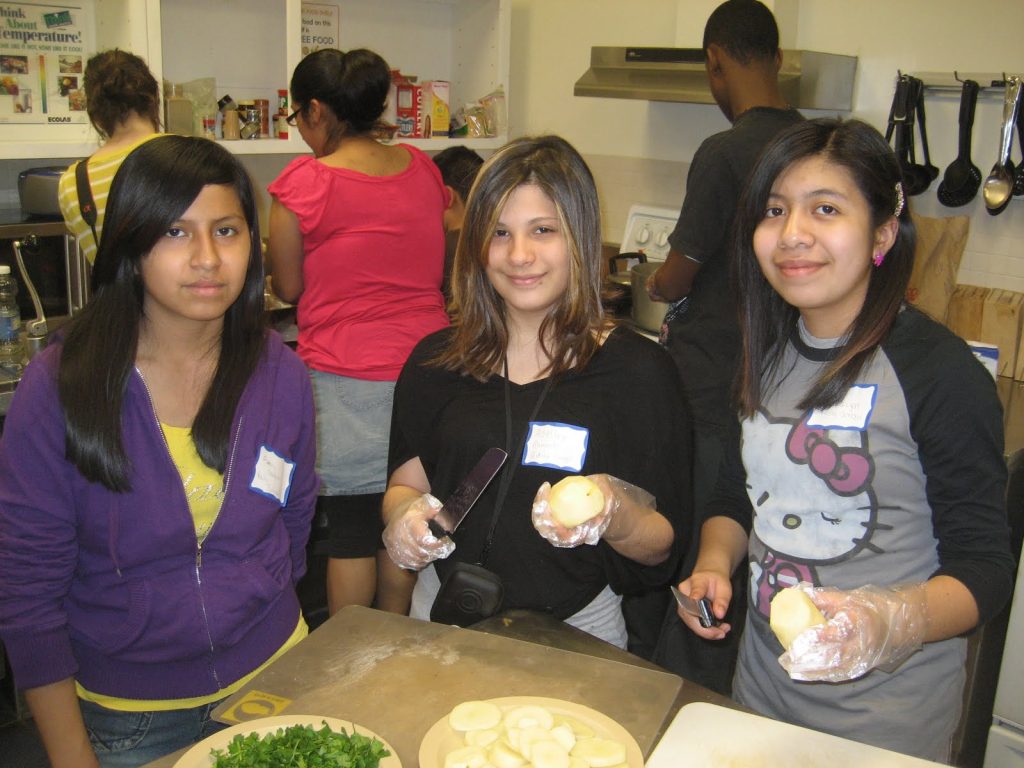
Exploring the Diverse Flavors of Global Culinary Traditions
Embarking on a journey through international cuisine reveals a universe of flavors, aromas, and cooking traditions that can be discovered right in your own kitchen. This exploration not only allows for the enjoyment of diverse foods but also fosters an appreciation for the stories behind each dish. Let us delve deeper into a few compelling aspects of traditional recipes that make them significant cultural treasures.
Seasonal and Regional Influences
One of the most fascinating aspects of traditional recipes is how they reflect the local environment and seasonal availability of ingredients. For instance, consider the classic French Ratatouille, a dish borne out of necessity during the summer harvest in Provence. Comprising eggplant, zucchini, tomatillos, and bell peppers, it highlights the bountiful produce of the region, wonderfully combining flavors and textures that are distinctly French.
In contrast, Japanese cuisine showcases a strong connection to the seasons through its infamous kaiseki dinner. This multi-course meal emphasizes fresh, seasonal ingredients while balancing colors, flavors, and presentation. Observing these nuances allows enthusiasts to engage deeply with the culture behind each recipe, while also inspiring creativity in their own culinary practices.
Cultural Significance of Preparation Rituals
The act of preparing certain dishes is often steeped in cultural rituals and traditions that span generations. For example, in Italy, the preparation of fresh pasta is not merely about creating a meal; it’s often a family event where members gather to knead the dough, roll the sheets, and create various shapes. This bonding experience highlights the importance of family and community within Italian culture and offers a shared connection to their heritage.
Similarly, in many Latin American countries, the process of making tamales is a cherished holiday tradition. Families come together to prepare masa (corn dough) and fill it with meats, cheeses, or vegetables, wrapping them in corn husks before steaming. This communal activity reinforces familial ties and a sense of belonging, showcasing how food acts as a unifying force.
Recipes that Tell a Story
Each recipe we learn serves as a narrative of its origin, encapsulating historic events, cultural exchanges, and even migrations. The Persian dish of Fesenjan, a stew made with duck or chicken and pomegranate, traces its roots back to ancient Persia, where the use of pomegranates symbolized fertility and abundance. Understanding the context behind such dishes deepens our appreciation for international cuisine and cultivates respect for diverse culinary practices.
Through investigating traditional recipes from around the globe, we cultivate a deeper understanding of humanity itself. As we connect the dots between culinary practices and cultural significance, our culinary endeavors become not just about food but about forming a tapestry of interwoven stories. These experiences lead us to better appreciate the richness of our global community while enhancing our own skills in the kitchen.
| Category | Details |
|---|---|
| Cultural Exchange | Exploring international cuisine fosters understanding and appreciation for various cultures. |
| Skill Development | Learning traditional recipes enhances culinary skills and creativity in the kitchen. |
When delving into the world of International Cuisine, one discovers that learning traditional recipes is not merely about cooking; it’s an adventurous journey of cultural discovery. Each dish tells a story steeped in history and tradition, reflecting the unique practices and ingredients of its origin. For example, consider the time-honored practice of making homemade pasta in Italy, which invites individuals to experience the art of Italian hospitality and its connection to family.In addition, engaging with international culinary traditions allows enthusiasts to emphasize sustainability and health-conscious eating by selecting local and seasonal ingredients often prevalent in traditional recipes. The nutritional benefits of diverse ingredients from around the globe can contribute to a more balanced and interesting diet.Moreover, exploring international cuisines promotes community and connection. Gathering friends and family to try new recipes not only enhances cooking experiences but also creates bonds through shared meals. It’s this combination of community, flavor, and diversity that makes the exploration of global cuisine an essential aspect of culinary education. Embracing the traditions of others opens pathways to understanding and appreciation, making cooking a soulful, enriching experience.
DIVE DEEPER: Click here to discover the art of storytelling
Embarking on a Culinary Journey: Techniques and Heritage
The preparation of traditional dishes not only involves ingredients but also requires specific techniques that have been passed down through generations. These culinary methods offer a glimpse into the heritage and craftsmanship of various cultures. For instance, in the Mediterranean, wood-fired ovens play a crucial role in baking traditional bread, such as the Italian focaccia or the Greek pita. The distinctive smoky flavors imparted by these ancient ovens signify a culinary practice that connects people to their ancestors and emphasizes the importance of communal cooking spaces.
Preservation of Culinary Heritage
Many cultures actively work toward preserving their culinary heritage through distinct cooking techniques and ingredient selections. Take, for example, the vibrant cuisine of Mexico, which showcases unique methods like nixtamalization, where corn is soaked and cooked in an alkaline solution. This process not only enhances the nutritional value of corn but also transforms the texture and flavor, resulting in essential staples like tortillas and tamales.
Similarly, the concept of fermentation is deeply embedded in Korean cuisine, particularly with dishes such as kimchi. This age-old preservation method allows vegetables to ferment over time, creating complex flavors and adding beneficial probiotics. Understanding these techniques offers enthusiasts a deeper appreciation for the role of science in cooking and highlights the ingenuity of various cultures in food preservation.
Fusion of Flavors: Cultural Exchange through Cuisine
As societies evolve, so too does their cuisine, often resulting in a rich tapestry of flavors and techniques at the intersection of different cultures. An excellent example of this cultural exchange is the creation of Peruvian Nikkei cuisine, a blend of traditional Peruvian ingredients and Japanese culinary techniques. The use of sushi-grade fish and sashimi-style preparations, combined with local ingredients like aji peppers and corn, creates a unique dining experience that pays homage to both heritages.
Additionally, the beloved dish of Chicken Tikka Masala highlights a fascinating intersection of Indian and British cuisine. Often considered a symbol of British multiculturalism, this dish sees marinated chicken in a spiced tomato cream sauce served with rice. It tells the story of migration and the global movement of people, reminding us of the shared experiences and commonalities between cultures.
Recipes as Cultural Diplomacy
Cooking and sharing traditional recipes can also serve as a form of cultural diplomacy, fostering understanding and appreciation for diverse societies. Events like potlucks or community feasts present an opportunity for individuals to share their culinary heritage and learn about others in a friendly environment. Through cooking classes or food festivals that celebrate traditional recipes from around the world, participants are challenged to step beyond their comfort zones and embrace unfamiliar dishes.
- Food Festivals: Events like “Taste of Chicago” or “Epcot International Food & Wine Festival” demonstrate the power of shared culinary experiences in bringing people together.
- Cooking Classes: Local classes in various American cities offer immersive experiences in traditional cuisines ranging from Moroccan tagines to Thai curries, allowing participants to connect with cultures through their food.
As we explore these traditional recipes and delve into the myriad influences that shape them, we engage in a profound cultural exchange, where food transcends mere sustenance and becomes a vital part of our global heritage. The act of preparing and sharing traditional recipes encourages not only culinary skills but also builds bridges of empathy and understanding across cultures.
DISCOVER MORE: Click here to dive deeper into storytelling techniques
Conclusion: The Global Table of Diversity
In our exploration of international cuisine, we discover that traditional recipes serve as more than just meals; they are vibrant narratives that weave together culture, history, and identity. Each dish embodies techniques, flavors, and stories that reflect the unique heritage of its origin. By learning these recipes, we not only enhance our cooking repertoire but also embrace a form of cultural appreciation that fosters global understanding.
As we delve into the intricacies of cooking methods like nixtamalization in Mexican cuisine or fermentation in Korean traditions, we uncover the remarkable ingenuity that has allowed these dishes to endure through time. The innovation that arises from cultural exchanges, such as the fusion of Peruvian and Japanese flavors, enriches our culinary landscape while illustrating the power of food to connect and unify diverse communities.
Participating in food festivals and cooking classes offers a hands-on approach to this cultural immersion. These shared culinary experiences not only introduce us to new flavors but also provide a platform for dialogue and exchange. As we gather around tables to savor dishes from around the world, we learn to appreciate the complexities of global narratives and the common threads that bind us all.
In essence, the act of sharing, preparing, and enjoying traditional recipes is a celebration of humanity’s rich tapestry of flavors and traditions. As we embark on our personal culinary journeys, we invite curiosity and openness. Let us continue to explore, experiment, and engage with international cuisines, knowing that each recipe holds the key to greater understanding and connection in our increasingly diverse world.
